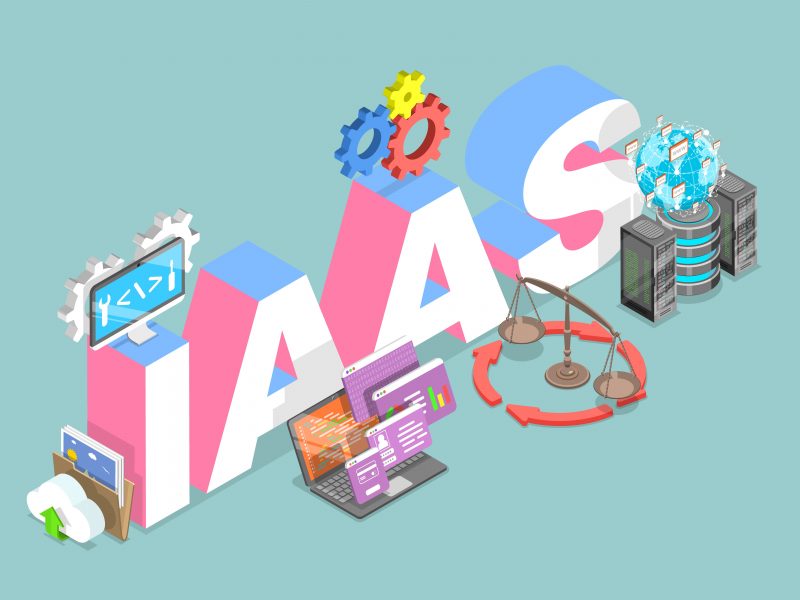Cloud computing has revolutionized how businesses operate, enabling them to harness the power of technology like never before. It has become the driving force behind digital transformation, allowing organizations to scale their operations, improve efficiency, and stay ahead of the competition in today’s fast-paced world.
Basics Of Cloud Computing
Cloud computing is a term that we often hear, but what exactly does it mean? At its core, cloud computing refers to delivering computing services over the internet. Instead of relying on physical servers or personal computers to store and process data, cloud computing allows users to access resources and applications remotely.
One fundamental aspect of cloud computing is its scalability. With traditional infrastructure, businesses had to invest in expensive hardware and Software upfront, often resulting in underutilized resources. Cloud-based solutions, on the other hand, offer the flexibility to scale up or down as needed. Whether you need additional storage space or computational power for your business operations, the cloud covers you.
Benefits of cloud computing
Cloud computing has become an indispensable tool for businesses in the digital era. It offers numerous benefits to drive efficiencies, enhance collaboration, and improve overall business performance. Here are some key advantages of cloud computing:
1. Cost Savings: One of the primary benefits of cloud computing is cost savings. By moving to the cloud, businesses can eliminate the need for costly hardware infrastructure and maintenance expenses. They only pay for the resources they use on a subscription basis, making it a more cost-effective option.
2. Scalability: With cloud computing, businesses can access unlimited scalability. Whether they need to increase or decrease their resource capacity, it can be done with just a few clicks. This flexibility allows organizations to quickly adapt to changing demands without investing in additional physical infrastructure.
3. Enhanced Collaboration: Cloud-based services enable seamless collaboration among team members regardless of their location or time zone. Real-time document sharing and editing features allow employees to work together efficiently and streamline workflows effortlessly.
What are the advantages and disadvantages of cloud computing?
Cloud computing has revolutionized the way businesses operate in today’s digital landscape. It offers numerous advantages that make it an attractive option for organizations of all sizes. However, like any technology, there are also some potential drawbacks.
One of the most significant advantages of cloud computing is its flexibility and scalability. With cloud services, businesses can quickly scale their resources up or down based on their needs. This eliminates costly infrastructure investments and allows companies to adapt rapidly to changing market demands.
Another advantage is cost savings. Cloud computing eliminates the need for expensive hardware and software installations, as well as ongoing maintenance costs. Companies only pay for what they use, making it a more affordable option than traditional IT infrastructure.
Cloud Virtualization
Cloud Virtualization is a key concept in cloud computing that allows for virtualising computer resources, such as servers, storage, and networks. It enables organizations to maximize their IT infrastructure by creating multiple virtual instances on a single physical server.
One of the main benefits of cloud virtualization is its ability to increase efficiency and reduce costs. With traditional IT infrastructure, each application or service requires dedicated hardware, leading to underutilized resources and wasted investments. However, with cloud virtualization, multiple applications can share the same physical server while maintaining separation and security.
Advanced Concepts of Cloud
Cloud computing has come a long way since its inception, and with technological advancements, new concepts have emerged to enhance its capabilities. These advanced concepts are driving the digital transformation for businesses across various industries. Let’s delve into some of these cutting-edge ideas shaping the future of cloud computing.
One such concept is multi-cloud architecture, which allows organizations to leverage multiple cloud service providers simultaneously. This approach offers flexibility and redundancy by distributing workloads among different clouds based on specific requirements. It also enables businesses to avoid vendor lock-in and optimize costs.
Cloud-Based Services
Cloud-based services have become an integral part of the digital landscape, revolutionizing how businesses operate. These services are powered by cloud computing technology, allowing organizations to access and utilize various applications and resources over the Internet.
One popular form of cloud-based service is Software as a Service (SaaS). With SaaS, users can access software applications through their web browsers without needing to install or maintain any software on their own devices. This eliminates the need for costly hardware upgrades or time-consuming installations, making it incredibly convenient for businesses of all sizes.
Platform as a Service (PaaS) is another cloud-based service that provides developers with a complete platform to build, test, and deploy applications. PaaS offers tools and frameworks that streamline development processes and reduce infrastructure costs. It allows developers to create innovative solutions without worrying about server management or scalability issues.
Software as a Service(SaaS)
Software as a Service (SaaS) is one of the most popular cloud-based services available today. It allows users to access and use software applications over the internet, eliminating the need for installation or maintenance on their devices. With SaaS, you only need an internet connection and a web browser to access your desired Software.
One of the main advantages of SaaS is its flexibility. Users can quickly scale up or down their usage based on their needs without worrying about hardware limitations. This makes it ideal for businesses with fluctuating demands or seasonal peaks.
Another benefit of SaaS is cost-effectiveness. Instead of purchasing expensive software licenses and investing in infrastructure, users can pay a subscription fee and have instant access to the latest versions and updates. This significantly reduces upfront costs and eliminates the need for ongoing maintenance.
Platform as a Service
Platform as a Service, also known as PaaS, is one of the key components of cloud computing. It provides users a ready-to-use platform for developing and deploying applications without worrying about the underlying infrastructure. With PaaS, developers can focus on writing code and building innovative solutions rather than managing servers or configuring Software.
So, how does PaaS work? Essentially, it offers a complete development environment in the cloud. Users can access tools, libraries, frameworks, and other resources necessary for creating applications. The platform handles all the backend services like storage, databases, security, scalability, and maintenance.
One of the significant advantages of using PaaS is its scalability. As your application grows in popularity or usage increases unexpectedly during peak times, you can quickly scale up your resources to meet demand without downtime or disruption. This flexibility allows businesses to respond promptly to changing market needs and deliver better customer experiences.
Infrastructure as a Service
Infrastructure as a Service (IaaS) is one of the critical components of cloud computing. It provides virtualized computing resources over the Internet, enabling organizations to access and manage their IT infrastructure without having to invest in physical hardware or maintain it on-site.
With IaaS, businesses can use scalable and flexible infrastructure that can be easily customized to meet their needs. This includes virtual servers, storage, networking capabilities, and security features. The service provider takes care of maintaining the underlying hardware and ensuring its availability while users have complete control over their applications and data.
One of the main benefits of IaaS is cost savings. Instead of purchasing expensive hardware upfront and dealing with ongoing maintenance costs, businesses can pay for what they use on a subscription basis. This allows them to scale up or down without significant financial investments.
Serverless computing
Serverless computing is a revolutionary concept in cloud computing that has gained significant attention and popularity in recent years. Unlike traditional server-based architectures, where developers have to manage the underlying infrastructure, serverless computing allows developers to focus solely on writing code without worrying about servers or scaling issues. This approach eliminates the need for provisioning and managing servers, making it highly scalable and cost-effective.
In serverless computing, applications are broken down into small functions that can be executed independently. These functions are event-driven and only run when triggered by specific events or requests. This granular execution level enables better resource utilization as resources are allocated dynamically based on demand.
One of the significant benefits of serverless computing is its automatic scalability. With traditional architectures, scaling up or down requires manual intervention and can result in downtime. However, with serverless computing, applications automatically scale based on incoming requests or events, ensuring optimal performance even during peak loads.
Conclusion
Cloud computing, the driving force behind digital transformation, offers scalability, cost savings, and global accessibility. It’s crucial to consider data security and downtime risks. Virtualization optimizes resource usage. Advanced concepts include containerization, microservices, edge computing, and hybrid clouds, tailoring cloud technology to diverse business needs.


